Thingiverse

Generic Coin Mech for Standard Arcade Video/Pinball Games by OutpostKodelia
by Thingiverse
Last crawled date: 3 years, 1 month ago
Generic Coin Mech for Standard Arcade Video/Pinball Games
Created by Outpost Kodelia (https://www.thingiverse.com/OutpostKodelia)
License: Creative Commons - Attribution
This mech is a generic alternative to coin-specific coin mechs and will allow virtually anything from a dime to a large token to pass through and trigger a coin up. The curved design should greatly reduce the tendency for the coin to get stuck, while slowing the coin down so it doesn't go fast enough to be ignored by more sensitive games.
Why not just use freeplay? Two big reasons:
Some games don't have a freeplay setting or their freeplay mode introduces bugs or exacerbates screen burn-in with persistent "press start" text.
It's more fun and nostalgic to have to put coins into a game to play it and hear that great coin-hits-the-box sound. :)
Assembly:
Snap the track cover into the track and press it in flat along the entire length of the track.
Install the pegs on the back side of the coin mech (or use the screws from the original mech, if you have them.
Insert the mech into the coin door and secure the front with the other pegs (or screws). With some coin doors, it may be easier to install these pegs first, too.
Snapping together the track and the main body should usually be good enough to hold it together, but it can be glued for a more permanent attachment. However, having it snapped in allows you to disassemble it to clear a jam, though the incidence of a jam should be exceedingly rare with this design.
v0.1 - Initial creation.
v1.0 - First release. Minor updates based on initial print.
Added split up STLs as a convenience for printers with smaller beds, but they're identical parts compared to the combined STL.
Print recommendations:
Supports: Yes, though they will be minimal.
Accuracy isn't super critical so 0.2mm layer height should be fine.
Created by Outpost Kodelia (https://www.thingiverse.com/OutpostKodelia)
License: Creative Commons - Attribution
This mech is a generic alternative to coin-specific coin mechs and will allow virtually anything from a dime to a large token to pass through and trigger a coin up. The curved design should greatly reduce the tendency for the coin to get stuck, while slowing the coin down so it doesn't go fast enough to be ignored by more sensitive games.
Why not just use freeplay? Two big reasons:
Some games don't have a freeplay setting or their freeplay mode introduces bugs or exacerbates screen burn-in with persistent "press start" text.
It's more fun and nostalgic to have to put coins into a game to play it and hear that great coin-hits-the-box sound. :)
Assembly:
Snap the track cover into the track and press it in flat along the entire length of the track.
Install the pegs on the back side of the coin mech (or use the screws from the original mech, if you have them.
Insert the mech into the coin door and secure the front with the other pegs (or screws). With some coin doors, it may be easier to install these pegs first, too.
Snapping together the track and the main body should usually be good enough to hold it together, but it can be glued for a more permanent attachment. However, having it snapped in allows you to disassemble it to clear a jam, though the incidence of a jam should be exceedingly rare with this design.
v0.1 - Initial creation.
v1.0 - First release. Minor updates based on initial print.
Added split up STLs as a convenience for printers with smaller beds, but they're identical parts compared to the combined STL.
Print recommendations:
Supports: Yes, though they will be minimal.
Accuracy isn't super critical so 0.2mm layer height should be fine.
Similar models
thingiverse
free

Printable Coin Mech Stand-In for Home Arcades by WindDrake
...ular coin mech would install in any arcade game, allowing it to take any coin up to 3x32mm. no more coin jams or adjusting mechs!
thingiverse
free

Outpost Kodelia Generic Nintendo Coin Mech (for push button style coin reject doors) by OutpostKodelia
...he mech.
in the not too distant future, we'll be posting a variant of this mech for the lever action style coin doors.
enjoy!
thingiverse
free

Wico Arcade Joystick 8-way Actuator by OutpostKodelia
...s - attribution
this is designed to fit on a standard wico joystick shaft. this is a direct replacement.
v0.1 - initial creation.
thingiverse
free

USB Encoder Mount For Pinball/Arcade
...erse
a simple platform mount utilizing 3mm screws for the common button to usb encoder found in diy digital pinball/arcade games
thingiverse
free
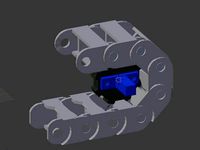
Tank Tread Tracks Snap fit with driver by deschnell
...build platform) then snap together.
planning on making a little robot on tank treads, with each tread driven by a separate motor.
thingiverse
free

Arcade coin mech modify by piggei
...e coin mech without any scanning for genuineness of the inserted coins / token. in this way you can use any coin to add a credit.
thingiverse
free

Hot wheels tracks by stankyleg53
...s.
update: added adapters for actual hotwheels tracks, i don't know if they work, so please leave a comment if they don't
thingiverse
free

Arcade Machine Coin Slot by spencerbyw
... feature and not a bug ;) probably won't update it unless it gets a lot of attention. the coin insert slot works fine though!
thingiverse
free

Virtual Pinball Coin Door Button Adapters by Kook
...ttons. i use them to navigate the menus in pinball fx3 (up-down-left-right, and, with a shift key, esc, "record", etc).
thingiverse
free

Wico Arcade Joystick Guard Actuator - Screw In Style by OutpostKodelia
...hotos.
v0.1 - initial creation.
print recommendations:
supports: no
print at high resolution (recommend 0.1 or 0.05 layer height)
Outpostkodelia
thingiverse
free

Wico Arcade Joystick 8-way Actuator by OutpostKodelia
...s - attribution
this is designed to fit on a standard wico joystick shaft. this is a direct replacement.
v0.1 - initial creation.
thingiverse
free

Wico Arcade Joystick Guard Actuator - Screw In Style by OutpostKodelia
...hotos.
v0.1 - initial creation.
print recommendations:
supports: no
print at high resolution (recommend 0.1 or 0.05 layer height)
thingiverse
free

Spinner Linkage Retainer by OutpostKodelia
...t on and hope it doesn't break... so, again, we highly recommend tpu. now, let's get back to ripping those spinner shots!
thingiverse
free

Williams Wedge Top T-Base Drop Target by OutpostKodelia
... others. these have become nearly impossible to find in any pinball store, so we made our own. hope this helps someone out there!
thingiverse
free

Flipper Height Gauge by OutpostKodelia
...d a pair of spring clamps to align the flippers. between the two, proper flipper alignment has never been easier! happy flipping!
thingiverse
free

Lane Guide Support Posts by OutpostKodelia
...sions as much as possible.
two shapes and sizes can be found here. pick the posts that match your game (some use both) and enjoy!
thingiverse
free

Voron 2 - Switch Holder and Labels by OutpostKodelia
...t. if not, these claim to work with 24v for sure:
https://www.amazon.com/qofowin-rocker-toggle-switch-marine/dp/b07s8tvc5j
enjoy!
thingiverse
free

Voron 2 - LED Wire Guide by OutpostKodelia
...dard t connectors, such as hammer heads. use m3x8mm cap head screws for the two wire option, or m3x12mm screws for the four wire.
thingiverse
free

Pinball Power Switch Plate by OutpostKodelia
...maged to use), then go with the full box option. both the plate and box options come in flush or countersink screw hole variants.
thingiverse
free

ST:TNG Pinball - Klingon Bird of Prey Mounting Stand by OutpostKodelia
... pla, this has enough rigidity to hold it up, but enough flex to give the kbop some fun bounce as you play and nudge the cabinet.
Pinball
thingiverse
free

Pinball. stl3dmodels.com by mtPrint
...pinball. stl3dmodels.com by mtprint
thingiverse
pinball
mtm
thingiverse
free
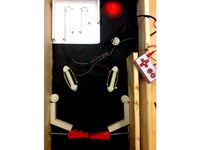
Pinball by arcarobotics
...r pinball machine. the students connected a makey makey and a laptop programmed with scratch for an authentic pinball experience.
thingiverse
free
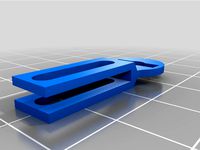
GnR Pinball by agima2000
...gnr pinball by agima2000
thingiverse
spare part for gnr jjp pinball
thingiverse
free

Zaccaria Pinball Bats by klausotto
...zaccaria pinball bats by klausotto
thingiverse
pinball bats for zaccaria pinballs second generation.
thingiverse
free
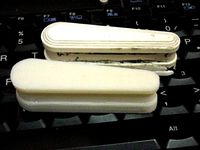
Pinball Flipper by phooky
...nt gottlieb c13150 pinball flipper! this is useful for people who need to replace their busted gottlieb c13150 pinball flippers.
thingiverse
free

Pinball Machine by Brett_Screaminduck
...pinball machine by brett_screaminduck
thingiverse
scale model of a pinball machine.
print the parts and assemble
thingiverse
free

Pinball LED holder SFCC pinball machine by FeedMePi
...ll as hold a 2mm or 0.080 inch piece of vinyl plastic flush to a 1/2 inch pinball play field. i will post pictures when complete.
thingiverse
free
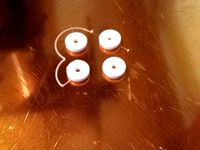
pinball spinner washer by bripulliam
...pinball spinner washer by bripulliam
thingiverse
washer used in pinball spinner. i made this one for my kiss pinball machine.
thingiverse
free

Pinball Gondola by Piere247
...pinball gondola by piere247
thingiverse
this is a rough cad drawing of the gondola that i want to put into my pinball machine.
thingiverse
free

Mainramp SWE1 Pinball by hemtoni
...mainramp swe1 pinball by hemtoni
thingiverse
mainramp swe1 pinball
Mech
thingiverse
free

Mech
...mech
thingiverse
this is a random mech i made, do what you want with it i guess
thingiverse
free

mech-armor01
...mech-armor01
thingiverse
mech-armor01
thingiverse
free

Stolitza Mech
...stolitza mech
thingiverse
a mech used by dwarven forces of the nation of stolitza
thingiverse
free

Mech by Lightshow74
...mech by lightshow74
thingiverse
a little mech character used to practice box modelling in blender.
thingiverse
free

Mech City: Construction Mech by WuLongToys
...for the mech. the wrecking ball crane can also be used with the tank tread vehicle from the vehicle pack as a construction crane.
thingiverse
free

Mech City: Stealth Mech by WuLongToys
...ncludes the following:
hunters (6 mech city people)
arms (right and left)
torso
legs
cockpit
neck
head/canopy
sword
throwing star
thingiverse
free

Mech City: Prototype Mech Bloxy by WuLongToys
...of of concept to make sure all the parts function properly, but there is much more that has been developed for this toy line ^__^
thingiverse
free

war mech by 0kami_SweetFang
...war mech by 0kami_sweetfang
thingiverse
made a war mech
thingiverse
free

Mech Flag by okami78
...mech flag by okami78
thingiverse
some mech flags.
thingiverse
free

Untitled by mech
...untitled by mech
thingiverse
Arcade
thingiverse
free

Arcade by Quentin_3D
...arcade by quentin_3d
thingiverse
arcade machine
thingiverse
free

arcade machine
...arcade machine
thingiverse
miniature arcade machine
thingiverse
free

Arcade panel
...arcade panel
thingiverse
a simple arcade panel.
thingiverse
free

Arcade stencil by Longquang
...arcade stencil by longquang
thingiverse
arcade stencil
thingiverse
free

template Arcade by Arcade_Machine
...template arcade by arcade_machine
thingiverse
template arcade
thingiverse
free

Raspberry Arcade
...raspberry arcade
thingiverse
work in progress
this is an arcade machine powered by raspberry. there're many things to do.
thingiverse
free

Arcade Button Label
...arcade button label
thingiverse
arcade button label
thingiverse
free

Arcade fixed by elfantasma
...arcade fixed by elfantasma
thingiverse
fixing arcade 2 game top
thingiverse
free

Arcade Marquee Bracket
...arcade marquee bracket
thingiverse
bracket to hold plexiglass for arcade marquee
thingiverse
free

Arcade Cabinet by Grantisimo
...arcade cabinet by grantisimo
thingiverse
an arcade cabinet i made for a friend as a present. 100mmx60mmx60mm
Coin
thingiverse
free

Gin Coin and Wine Coin - Decision Coin by VictorPiella
...n - decision coin by victorpiella
thingiverse
this coin was designed to be printed on its edge using a brim and without support.
thingiverse
free

Coin
...coin
thingiverse
i made this coin to keep track of resources during settlers roll n' write
thingiverse
free
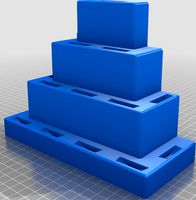
Coin Stand for Challenge coins by Mebro2020
...coin stand for challenge coins by mebro2020
thingiverse
just a stand to put 14 challenge coins on.
thingiverse
free

Coins by berickson3690
...coins by berickson3690
thingiverse
coins
thingiverse
free

coins by splatooninator_printing
...coins by splatooninator_printing
thingiverse
coins
thingiverse
free

Coin by moeigen
...coin by moeigen
thingiverse
coin
thingiverse
free

coin by jayddiie
...coin by jayddiie
thingiverse
coin
thingiverse
free

Coin holder
...coin holder
thingiverse
coin holder for coins diameter 20 ,22 ,24 ,26 mm.
thingiverse
free

Coin Sorter
...coin sorter
thingiverse
this is a simple uk coin sorter. an aid to keeping your coins organised!
thingiverse
free

murakami coin
...murakami coin
thingiverse
murakami coin
Generic
thingiverse
free

generic house
...generic house
thingiverse
it is a generic house
thingiverse
free

codeFlake Generator
...codeflake generator
thingiverse
a script that generates lovely mandala-like objects.
thingiverse
free

Generic atom
...generic atom
thingiverse
a generic atom you can use to build molecules for school or for hobby.
thingiverse
free
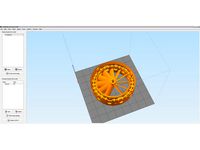
Wind generator
...wind generator
thingiverse
the wind generator we are currently designing! i rejected this option, but it looks cool!
thingiverse
free

Generic Cylinder Generator by amthe
...e
you can make cylinders here. it's honest work.
this was made because i needed a cylinder for the open air purifier project
thingiverse
free

Spring Generator
...spring generator
thingiverse
this generator has been made under openscad.
recommanded more than 0.3 thikness value.
thingiverse
free

Generic Tablet by cadunico
...generic tablet by cadunico
thingiverse
generic tablet
thingiverse
free

Rock Generator by alexdfox
...rock generator by alexdfox
thingiverse
for generating rocks
thingiverse
free

Generic brackets by derjipi
...generic brackets by derjipi
thingiverse
generic brackets.
thingiverse
free

Droplet generator by myrios
...droplet generator by myrios
thingiverse
droplet generator
Video
thingiverse
free

Video Surveillance Sign
...video surveillance sign
thingiverse
a video surveillance sign for the shop of a friend.
thingiverse
free

Dirty Video Mixer
...dirty video mixer
thingiverse
dirty video mixer 3u 4hp panel
thingiverse
free

Video-Cam-Adapter for Table-Videos by Minihawk
...is a internal thread in the one hole so you can drive in the screw of the used camera arm, dimension 1/4 inch, 20 winds per inch.
thingiverse
free

iPhone Video Mount by jefforfree
...iphone video mount by jefforfree
thingiverse
iphone or android video mount. just place in the slot and take videos.
thingiverse
free

Video Stand by nickpalmer789
... watch in comfort! i really appreciate pics of people using my things! please make these and post them in the made section below!
thingiverse
free

support emeteur video by louff
...support emeteur video by louff
thingiverse
support emeteur video
thingiverse
free

wearable video glass by rchenmit
...wearable video glass by rchenmit
thingiverse
wearable video glasses
thingiverse
free

CDTV Video back cover for the CDTV Video card by arananet
...al 3d design of the back cover for my cdtv video card. print on any material.
it might need some adjustment to fit properly.
edu.
thingiverse
free

Video Card Support by BalonekCZ
...video card support by balonekcz
thingiverse
support for pc video card
thingiverse
free

iPhone Video Mount by jefforfree
...iphone video mount by jefforfree
thingiverse
iphone mount for taking video from a shelf.
Games
thingiverse
free

screwdriver for game boy games
...screwdriver for game boy games
thingiverse
needed a screwdriver for game boy games
thingiverse
free
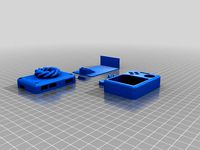
games by
...games by
thingiverse
nothing special
thingiverse
free

Game Boy Games Case by HannahA31
...to place, but it holds the games securely side by side. the game boy logo is on the front while the nintendo logo is on the back.
thingiverse
free

The Peg Game
...the peg game
thingiverse
the peg game
thingiverse
free
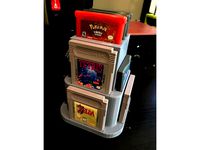
Game Boy Game Display Tower by sanzliot
...game boy, game boy color or game boy advance games in a 360...
thingiverse
free

D6 for game
...d6 for game
thingiverse
dice for a friends game.
thingiverse
free
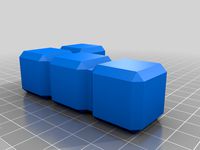
L Game
...strategy.https://www.youtube.com/watch?v=64pa31_wja0
play a digital version of the game here:https://hwwmath.looiwenli.com/l-game
thingiverse
free
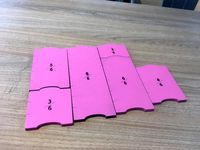
Fractions Game
...fractions game
thingiverse
this is a game that help kids to learn fractions.
thingiverse
free

games by nick_rage
...games by nick_rage
thingiverse
mini game not sure how to spell it crokenole
thingiverse
free

game of thrones board game by nefilim
...game of thrones board game by nefilim
thingiverse
miniature per il gioco del trono di spade
Standard
thingiverse
free
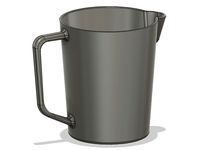
Jug Standard by johnkh
...jug standard by johnkh
thingiverse
jug standard
thingiverse
free

Standard Dice by UAlbanyInformatics
...standard dice by ualbanyinformatics
thingiverse
standard dice
thingiverse
free
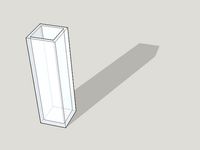
Standard cuvette by Dr_MCeeP
...standard cuvette by dr_mceep
thingiverse
a model of a standard cuvette.
thingiverse
free

Marauder IIC (Standard)
...marauder iic (standard)
thingiverse
marauder iic (standard)
thingiverse
free
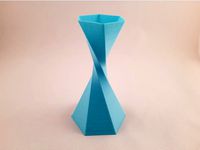
Standard Vase by mikeyy97
...standard vase by mikeyy97
thingiverse
standard vase to test 0,6mm layer heights
thingiverse
free
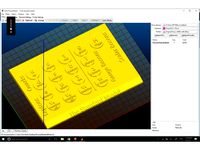
The Standard Model by henryhollis4
... model by henryhollis4
thingiverse
based on the standard model of particle physics:
https://en.wikipedia.org/wiki/standard_model
thingiverse
free

Standard bowl by skrivarekonto
...standard bowl by skrivarekonto
thingiverse
standard bowl. work with abs , pla and lots of other filaments.
(not tested)
thingiverse
free
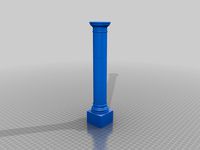
MAS Standard column
...mas standard column
thingiverse
modern architectural stone ltd standard column 1/10 scale
thingiverse
free

The Standard Doohicky by Graysmith75
...dard doohicky by graysmith75
thingiverse
a standard fan with 10 degree angle of attack - smooth and hopefully frictionless(ish)
thingiverse
free

FlyPurrz Purrz.75 Motorspant standard / motor mount standard by FlyPurrz
...dard / motor mount standard by flypurrz
thingiverse
motorspant standard für den purrz.75 / motor mount standard for the purrz.75
